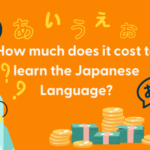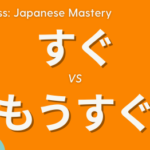The Difference Between “多くの親” (Ooku no Oya) and “親の多く” (Oya no Ooku) in Japanese
When learning Japanese, you might come across phrases like “多くの親” (ooku no oya) and “親の多く” (oya no ooku). Both translate to “many parents,” but their meanings and nuances differ slightly. Understanding these differences will help you convey your message more accurately and naturally in Japanese.
What’s the Difference Between “多くの親” and “親の多く”?
Both “多くの親” and “親の多く” express the idea that many parents are involved in a certain situation. However, the nuance is what sets them apart:
- 多くの親 (Ooku no Oya):
- Focus on the Parents as a Whole: This phrase emphasizes the presence of parents as a collective group. For instance, in “多くの親が子どもにスマホを持たせるようになってきた” (Ooku no oya ga kodomo ni sumaho o motaseru you ni natte kita), the focus is on the general trend among parents.
- Emphasizing Quantity: It’s used when you want to stress that there are many parents involved, without delving into specifics. For example, “多くの親が賛成している” (Ooku no oya ga sansei shite iru) highlights that a large number of parents are in agreement.
- 親の多く (Oya no Ooku):
- Focus on a Subset Within the Group: This phrase shifts the attention to a portion of the parent group. For example, in “親の多くは子どもの教育に力を入れている” (Oya no ooku wa kodomo no kyouiku ni chikara o irete iru), the emphasis is on the majority of parents within the group who are invested in their children’s education.
- Statistical Nuance: It often carries a more objective, statistical tone, making it useful when citing research or surveys. This can give your statement a more factual or formal feel.
Practical Examples
- 多くの親 (Ooku no Oya):
- “多くの親が、子どもの将来について悩んでいる。” (Ooku no oya ga, kodomo no shourai ni tsuite nayande iru.)
- Many parents are worried about their children’s future.
- “多くの親は、子どもに習い事をさせている。” (Ooku no oya wa, kodomo ni naraigoto o sasete iru.)
- Many parents have their children attend extracurricular activities.
- “多くの親が、子どもの将来について悩んでいる。” (Ooku no oya ga, kodomo no shourai ni tsuite nayande iru.)
- 親の多く (Oya no Ooku):
- “親の多くは、子どもにスマホを持たせることに抵抗がある。” (Oya no ooku wa, kodomo ni sumaho o motaseru koto ni teikou ga aru.)
- Many parents are resistant to giving their children smartphones.
- “親の多くは、子どもの睡眠時間が短いことを心配している。” (Oya no ooku wa, kodomo no suimin jikan ga mijikai koto o shinpai shite iru.)
- Many parents are worried about their children’s short sleep duration.
- “親の多くは、子どもにスマホを持たせることに抵抗がある。” (Oya no ooku wa, kodomo ni sumaho o motaseru koto ni teikou ga aru.)
Which Should You Use?
The choice between “多くの親” (ooku no oya) and “親の多く” (oya no ooku) depends on the context and the nuance you wish to convey:
- To emphasize parents as a whole: Use “多くの親” (ooku no oya).
- To highlight a subset within the group of parents: Use “親の多く” (oya no ooku).
Conclusion
Understanding the Difference Between “多くの親” and “親の多く”
“多くの親” (ooku no oya) emphasizes the parents as a group, making it ideal when discussing general trends or situations. On the other hand, “親の多く” (oya no ooku) focuses on the portion of parents within the group, often carrying a more analytical or formal tone.
Recognizing and using these subtle differences can significantly impact how your message is perceived in Japanese. As you continue your language studies, pay attention to these nuances to enhance your communication skills.




